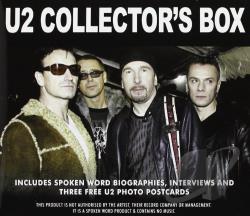I have started this journey backwards and I have been thinking
about different U2 songs and the feelings they evoke within myself as well as
others around me. U2’s music has always had
a powerful message. I scrolled thru my selections and came across “Mothers of
the Disappeared”. The music started to play and away my journey began.
Bono met René Castro, a Chilean mural artist. Castro had been tortured and held in a concentration camp for two years by the dictatorial Chilean government because his artwork criticized the Pinochet-led regime that seized power in 1973 during a coup d'état. Castro showed Bono a wall painting in the Mission District that depicted the ongoing plight in Chile and Argentina. He also learned of the Madres de Plaza de Mayo, a group of women whose children were forcibly disappeared by the Argentinian government. The Madres' children were students who had opposed the government during the Dirty War, and the coup d'état that brought Jorge Rafael Videla into power. The Madres joined to campaign for information regarding the locations of their children's bodies and the circumstances of their deaths, believing them to have been kidnapped, tortured, and murdered.
“I remember [Daniel Lanois], when we were finishing ‘Mothers of the Disappeared’, losing his mind and performing at the mixing desk like he was Mozart at the piano, head blown back in an imaginary breeze, and it was pouring down with rain outside the studio and I was singing about how ‘in the rain we see their tears,’ the tears of those who have been disappeared. And when you listen to that mix you can actually hear the rain outside. It was magical really...”
Inspired by the mural, Bono took an extended break from recording into July, travelling to Nicaragua and El Salvador with his wife, Alison Hewson, to see firsthand the distress of peasants bullied by political conflicts and US military intervention. While there, they worked with the Central American Mission Partners (CAMP), a human rights and economic development organization.
In El Salvador they met members of the Comité de Madres
Monsignor Romero (COMADRES: Committee of the Mothers Monsignor Romero), an
organization of women whose children were forcibly disappeared by the El
Salvadoran government during the Salvadoran Civil War because they opposed the
military regime that was in power. At
one point during the trip, Bono, Alison, and a member of CAMP were shot at by
government troops while on their way to deliver aid to a group of farmers. The
shots were a warning and, according to author John Luerssen, the incident made
Bono realize that "they didn't care for their intrusion and they could kill
them if they felt compelled."
“There was a love/hate relationship with America. A lot of that album reflected Bono’s feelings coming back from El Salvador and the Conspiracy of Hope tour and seeing the brutal face of US foreign policy.”
In 2006, Bono recounted another experience he had in El Salvador, where he had seen a body thrown from a van into the road. He remarked, "People would just disappear. If you were part of the opposition, you might find an SUV with the windows blacked out parked outside your house.... If that didn't stop you, occasionally they would come in and take you and murder you; there would be no trial Bono understood the cause of the Madres and COMADRES and wanted to pay tribute to it. His experiences in Central America inspired the lyrics of "Mothers of the Disappeared" and another track from The Joshua Tree, "Bullet the Blue Sky".
In 1998, Bono re-recorded the song a cappella in English and Spanish for the album ¡Ni Un Paso Atras! (English: Not One Step Back!), along with a recitation of the William Butler Yeats poem "Mother of God". The album was created by the Madres in commemoration of the disappearance of their children.




